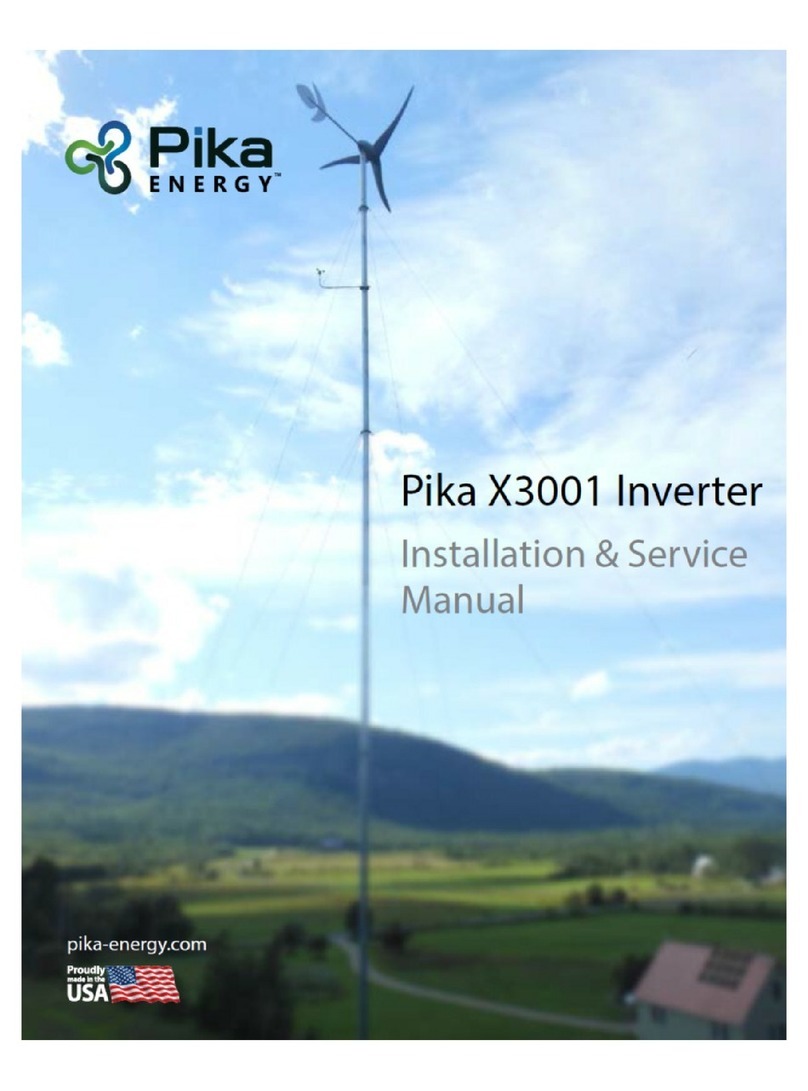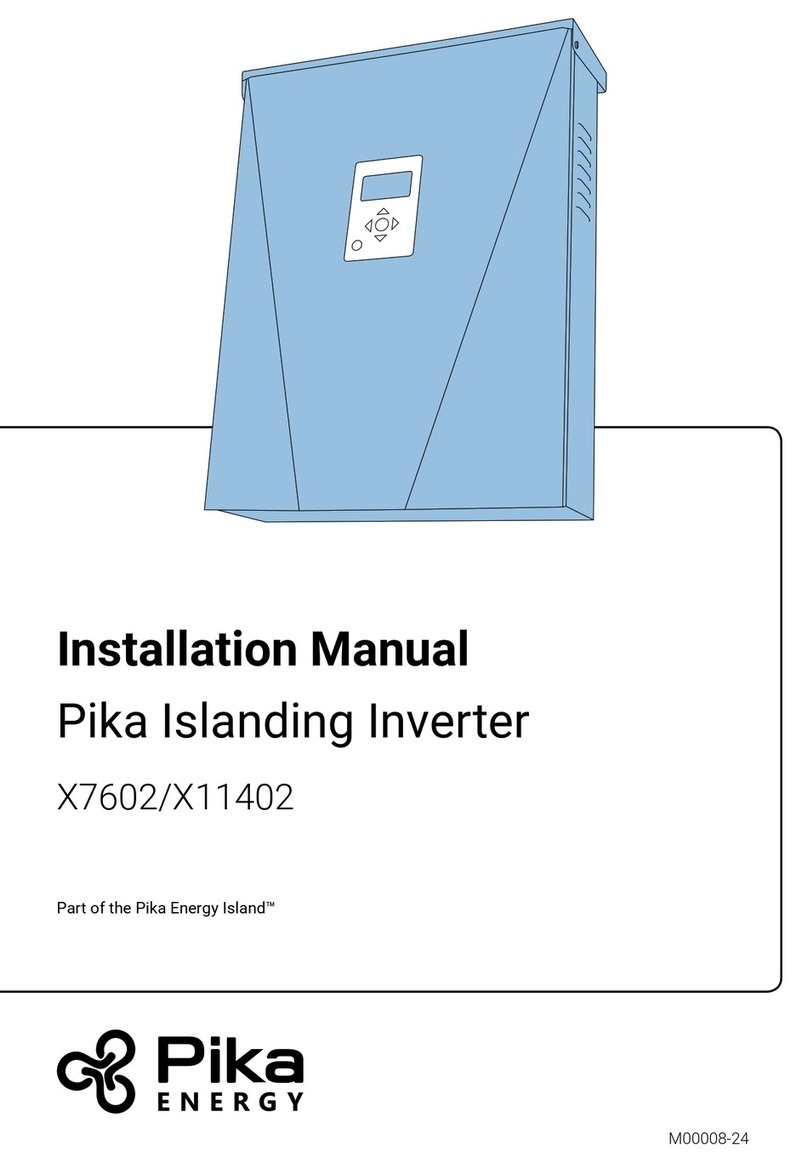7Islanding Inverter Operation Manual M00010-17
Section 2: Safety Specications
Safety Shutdown
The Pika Energy Island system can signal to connected devices on REbus to shut down and limit
output voltage to a safe level. The red Safety Shutdown button on the front of X7602/X11402
activates a Safety Shutdown. An external shutdown button may also be installed,
given appropriate labeling. See “External Safety Shutdown Switch” on page 29 of
the Islanding Inverter Installation Manual
To enter a Safety Shutdown, press and hold the red button on the front of the inverter. The
Safety Shutdown LED will illuminate and the LCD screen will indicate a Safety Shutdown has
been initiated.
In a system congured to provide backup power, the DC bus will remain energized on loss of
AC grid power. Upon entering a Safety Shutdown, a shutdown signal will be transmitted to all
devices connected to REbus. In Safety Shutdown, X7602/X11402 will disconnect from the grid,
stop sourcing power to REbus, and immediately disable all sources on REbus by sending a global
shutdown signal. All PV Link optimizers will disconnect their output. The Safety Shutdown LED
will be illuminated to show that the inverter has entered a Safety Shutdown. DC bus voltage will
be displayed on the inverter screen.
WARNING: UNLESS THE SYSTEM IS IN A SAFETY SHUTDOWN, LIVE
VOLTAGE MAY BE PRESENT, EVEN WHEN THE POWER GRID HAS FAILED
AND THERE IS NO SOURCE OF POWER FROM THE SOLAR PANELS. TO
ENSURE THE DC BUS IS NOT POWERED, ALWAYS ACTIVATE SAFETY
SHUTDOWN BEFORE PERFORMING EMERGENCY OR SERVICE WORK.





























